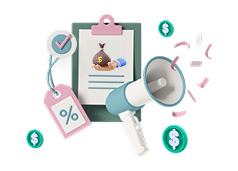
How Currency Exchange Rates Impact Your Study Abroad Budget & Loan Repayments
Studying abroad is an exhilarating adventure—immersing yourself in new cultures, advancing academically, and building lifelong connections. Yet behind those bright opportunities lies a critical reality: currency exchange rates can significantly affect both your daily budget and the total cost of an education loan for abroad studies.
Whether you’re using a study abroad education loan taken in your home country or a student loan USA denominated in a foreign currency, fluctuations in exchange rates can tip the financial scales unexpectedly—even during grace periods or moratoriums. Let’s explore how this plays out, and what you can do to manage it.
Start Your Study Abroad Application
Exchange Rates & Your Budget: An Overview
You may initially budget tuition and housing, but if your home currency weakens, a modest shift—from ₹75 to ₹85 per USD, for example—can balloon costs dramatically. For instance, a USD 20,000 tuition may cost ₹15 lakh at ₹75 per dollar, but ₹17 lakh at ₹85.
Daily expenses—rent, meals, transport—also swell. Even a small weekly coffee allowance may blow out with repeated conversions and even unseen charges, such as exchange markups, bank fees, can add up: in 2024 alone, Indian families lost approximately 1700 crore (~ USD 200 million) in conversion costs.
Student Loans & Foreign Currency: How Repayments Grow
Suppose your study abroad education loan or student education loan for study abroad is denominated in a foreign currency. In that case, the actual repayment in your home currency can increase significantly if devaluation occurs during the grace period or moratorium.
Example:
| Scenario | Exchange Rate | INR Equivalent of $50,000 |
| Loan Taken (Disbursement) | ₹75 = USD 1 | ₹37.5 lakh |
| Repayment Begins, INR Weakens | ₹85 = USD 1 | ₹42.5 lakh |
| Incremental Burden | — | ₹5 lakh extra |
Proactive Strategies for Currency Exchange Rates Impact Your Study Abroad
• Lock-in & Hedging Tools
You can hedge against future currency risks by fixing a good exchange rate today by using forward contracts or hedging instruments.
• Forex Cards & Multi-Currency Accounts
Forex cards will enable you to preload money at set rates, whereas with multi-currency accounts you have the ability to hold and convert money when the rates are favorable to you.
• Monitor and Time Conversions
Exchange rates can be tracked regularly and by converting in a bit at a time instead of converting the whole amount in one go, you can save money.
• Currency Buffers & Budget Flexibility
Buffer additional capital to take in rate changes. And there should be some room in your monthly budget too to cover any unforeseen increases.
• Earn in Stronger Currency, If Possible
If your education loan for abroad studies is under strain, look for remote or part-time work that pays in foreign currency.
• Refinance or Top-Up Loans
If rates climb sharply, refinancing your student loan or taking a top-up loan—especially one denominated in a more stable or local currency—may be a practical fallback.
Secure your Overseas Education Loan
Conclusion: Why Currency Exchange Matters for You
Understanding how forex rates can erode your study abroad education loan, and how things like grace periods allow interest to accumulate, isn’t just technical—it’s about protecting your stability.
Holistic planning—combining smart budgeting, flexible repayment structures, and even refinancing—lets you focus on your studies, not your stress. After all, the goal is to make your investment in education truly worth it.

Find the Best
Education Loan Offers in Seconds!
Tailored loan recommendations just for you
Start Eligibility CheckFrequently Asked Questions
Can currency fluctuations affect my loan during the grace period?
Yes. During the grace or moratorium period, interest still accumulates while your home currency might weaken—raising the amount you eventually owe.
What is forex coverage or hedging, and how does it help?
Forex coverage means locking in exchange rates in advance—commonly via forward contracts or forex cards—to avoid unpredictable fluctuations.
Should I consider refinancing if rates go against me?
Yes, refinancing or adding a top-up loan in a more stable currency can lower interest or shift repayment in a less volatile framework.
Is earning in the host country currency advisable?
If allowed, earning in a stronger currency helps cushion you against currency risk since your income and costs align. Remote freelancing can also achieve this.
How can I build a buffer for exchange swings?
Save an extra percentage of your tuition and living cost—around 5–10%—in a multi-currency account or forex card, so you’re fortified against sudden rate changes.
Book A Free Counseling
Related Blogs
Want to connect with
Our Experts?
We provide keep one to one counselling to
Study Abroad Aspirants



.webp)





